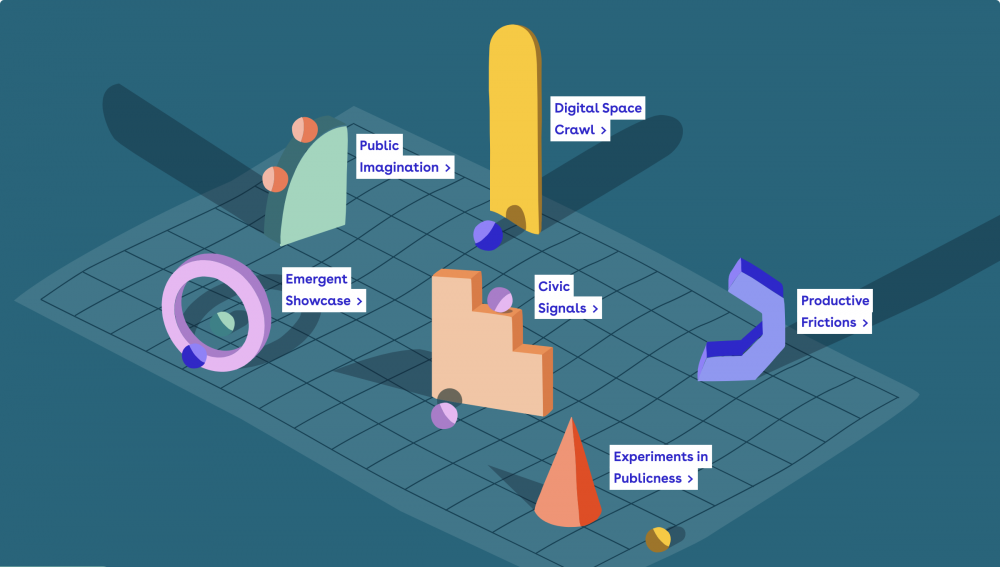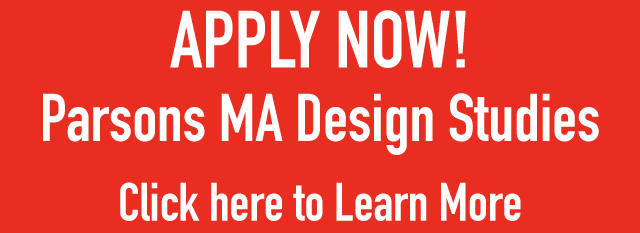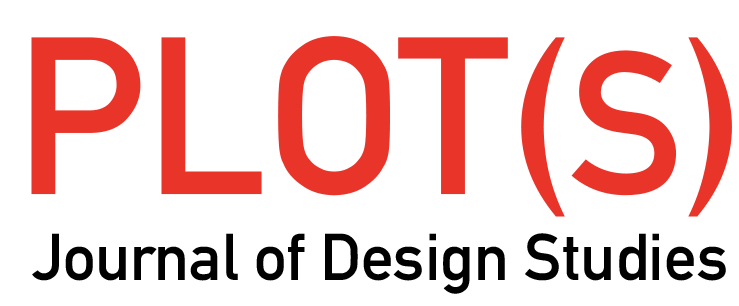Public Spaces, Private Failures: The Future of the Digital Public Sphere
Celine Nguyen
In 1986, a few years before the world wide web was available to the public, Melvin Kranzberg published his six laws of technology. The first of these claimed, “Technology is neither good nor bad; nor is it neutral.”1 The years since then have served as a difficult, sobering example of how the internet can be both a friend and foe of the public. Twitter’s influence on 21st century politics is an instructive example. In the early 2010s, Twitter was celebrated for its role in the Arab Spring, Occupy Wall Street, and Black Lives Matter movements. Coverage of these grassroots movements often highlighted the positive impact of social media technologies in helping decentralized protest movements organize and amass power.2 This positive stance has eroded since the 2016 US presidential election and throughout Donald Trump’s presidency (2017-2021), as Twitter, Facebook, and YouTube (owned by Google) were repeatedly criticized for disseminating fake news, tolerating harassment of marginalized users, and applying inconsistent moderation policies.3 For good or bad, these sites are part of what sociologist Zeynep Tufekci has described as a “reconfigured public sphere,” where public issues and struggles inhabit digital and physical spaces.4

Figure 1. “Festival map.” 2021. Courtesy of New_ Public Festival. Source: https://newpublic.org/festival.
For many, the COVID-19 crisis and its attendant social distancing and lockdown measures have made digital spaces the primary—perhaps even only—public sphere. But the numerous failures of these platforms invite designers and design historians to consider what a better digital future could look like. This question was central to the New_ Public Festival, organized online from January 12–14, 2021 which brought designers, artists, technologists, and academics together to consider how digital public spaces can better contribute to political and civic life. (Fig. 1) The festival was hosted by Civic Signals, a nonprofit organization that recently concluded a two-year research effort to understand and develop a framework for public-friendly online spaces. In line with this research, the New_ Public Festival sought to interrogate the failures of existing community spaces, enact a better community (through the design of the digital festival “space”), and inspire alternatives to our current internet landscape.
Day One
The first day showed a commitment to an interdisciplinary consideration of the design and impact of digital public spaces. The New_ Public Festival proposed that designers and technologists begin “thinking like digital urban planners” in questioning the existing built environment of the internet.5 In her opening remarks, Talia Stroud, the co-director of Civic Signals, asked participants to engage with generosity, curiosity, and care. The artist Lars Jan then invited participants to quietly reflect on their social and political positions, through a list of questions that included the personal (Do you like a problem? Does your hero look like you?), the political (Have you ever marched in a protest? Did your protest achieve its goal?), and the philosophical (Do you know how to share? Is there enough to go around? Is there justice?). This was followed by a keynote speech from Danielle Allen, a political theorist whose historical and theoretical discussion traced a lineage from the 21st century’s digital public spaces to the ancient Athenian Agora. In all these spaces, she noted, “It’s impossible to have [a] discourse space where people convene that doesn’t organize power in some way. The only question is how you’re organizing power.”
Metaphors of space undergirded much of the discussion that followed, in a panel discussion titled “Why the Internet Needs Better Public Spaces” moderated by Sara Hendren, a design researcher, artist, and academic. Hendren’s opening remarks clearly outlined the stakes: “Public spaces become the public sphere. They are the spaces that collect us and sometimes collectivize us.” Drawing on themes familiar to design historians and scholars, Hendren articulated how our built environment and material culture can embody and afford specific political ideals. The panel, which drew on the expertise of technologists, humanists, practitioners, and academics, considered how concepts from the physical world could translate into the design of better digital worlds. Gabriella Gómez-Mont, the founder of Laboratorio para la Ciudad (LabCDMX), a digital interdisciplinary laboratory for Mexico City, shared her experiences in serving a metropolitan area of 21 million people, and emphasized the perils of building civic technology without considering the existing architectures of power.6 The entrepreneur and technologist Phillip Rosedale reflected on building Second Life, an online world where nearly one million “residents” have created virtual art exhibitions, marketplaces, and national embassies.7 Rosedale emphasized the importance of prototyping complex systems that can produce unexpected, emergent properties, adding, “We are…not capable of predicting the outcomes of most systems we’re designing.” But Rosedale also acknowledged the fraught nature of building products that produce unexpected harm. Such harms can disproportionately impact racially marginalized and disabled communities, whose access to the public sphere is often conditional and fragile. Jaipreet Virdi, a historian of medicine, technology, and disability, asked, “What [does] it mean when a person’s body is seen as a barrier to full participation in society?” Virdi emphasized that designing for disability is necessary for producing truly universal and inclusive environments. Within physical public spaces, Virdi noted that the design of curb cuts on sidewalks affords greater mobility for wheelchair users as well as people with strollers. A digital parallel, Virdi suggested, is media captioning, which permits a broader swath of society to engage in public discourse and debates around video and image content. Captioning a video of a political speech makes it accessible to D/deaf users, as well as people without headphones. Virdi’s words reminded me of projects where the use of alt-text (alternative text; a conventional method for storing and displaying image captions) can be an opportunity for artistic and critical engagement. Alt-Text as Poetry a project by artists Bojana Coklyat and Shannon Finnegan, considers alt text not as an unwelcome obligation but an opportunity for creative exploration.8 Alt text has also been used to explore alternatives to common energy-intensive web design practices. For the online magazine Branch, which critically engages with the environmental impact of the internet, designer Tom Jarrett chose to display alt text instead of images when energy grid use is high. Users can selectively load images of interest instead of automatically loading all of them—a departure from the infinitely scrolling feed of images employed by many social media sites.9 Such projects affirm Virdi’s articulation of accessible tech as a public good, providing multiple benefits to different communities.
Day Two
In articulating the possibilities of better digital public spaces, the panelists also spoke to the inadequacies of our present ones. Sara Hendren concluded the first day’s panel, “Why the Internet Needs Better Public Spaces,” by observing that “these software platforms have become governance without government.” This theme was developed on the second day of the festival, where speakers critically examined the power these platforms have to moderate content and govern access to the public sphere. A roundtable of artists, activists, and technologists shared provocations and possible futures for attendees to discuss within smaller groups. Cory Doctorow, a writer and activist, issued a forceful challenge to the role of platforms, saying, “We can work to fix the internet, or we can work to fix the platforms, but we can’t do both. They’re at cross-purposes. Trying to fix the platforms means giving them more power…If you want to fix the internet, it’s because you think no one should have [their] job.” His critique was echoed by the artist and technologist Xiaowei Wang, who foregrounded the private ownership of these public platforms. “If we’ve historically likened digital spaces to public squares, what if they’re actually private shopping malls? And what does digital accountability look like besides calling the mall cop?” Wang said. Following a year of large-scale protests against policing and a greater interest in non-carceral community safety, Wang’s words demanded a reevaluation and contestation of these platforms and the power they have to moderate the digital public sphere. Their words also echoed older urbanist critiques that traditional public spaces have been subsumed under corporatized, commoditized “Panopticon malls.”10 As the organizers of New_ Public Festival noted, the increased reliance on digital public spaces is occurring in the US alongside diminished funding for our physical public spaces.11 Building better digital spaces may not only involve learning from the successes of physical spaces—it also demands that we attend to their failures, including histories of disinvestment, redlining, and gentrification.
These provocations were followed by a showcase titled “Glimpses of Our Digital Public Futures,” which proposed alternatives to the private shopping malls of Facebook, Twitter, and other dominant platforms. Some projects addressed the inadequacies of present platforms. The software engineer Tracy Chou shared her work on the program Block Party, which was designed to address the lack of anti-harassment tools on platforms like Twitter.12 Other projects sought to build alternative platforms and create ecosystems of independent, cooperatively moderated spaces. Internet artist and programmer Darius Kazemi shared “Run Your Own Social,” a manifesto and practical guide for running smaller, more intimate social networking spaces.13 Crucially, Kazemi emphasized that these sites are social problems—not technological problems—and he underlined the importance of policy, values, and power in building a safer internet. These projects testify to a desire to create alternative spaces, where existing community norms and modes of interaction are redesigned with greater care to the human experience—not the advertising experience.
Appropriately, the design of the New_ Public Festival space itself, mediated through a panoply of digital platforms, sought to incorporate principles of safety, equity, disability, and access. The keynote, talks, panels, and showcases were hosted on the videoconferencing app Zoom, where speakers and festival participants were invited to introduce themselves with land acknowledgments, pronouns, and a verbal description of themselves. The use of Zoom was complemented by several other software platforms like Discord, a text and voice messaging platform widely used in video-gaming communities, which allowed attendees to discuss the festival and continue conversations beyond the main Zoom sessions—this felt like a digital version of gathering at a conference’s hotel lobby, with the gentle presence of a moderation team to guide participants and ensure community safety. On the first day of the conference, I “ran into” a friend in the New_ Public Discord—an unplanned meeting that felt as serendipitous as running into a dear friend at a bar. As we live on different continents, our unexpected interaction, almost a year into the COVID-19 crisis, felt doubly precious. Dialup, a voice chat app, was also used to schedule phone calls between festival attendees, and it provided another way to experience sociability and community through an online environment.14 A week after New_ Public, I had a discursive, energizing phone call with a researcher in the Netherlands about our festival experiences and our hopes for the future of online spaces. These interactions, stitching together people from disparate locations, testified to the power of the Internet in creating a new community geography. By organizing social spaces of different scales, from a large Zoom meeting to a one-on-one call, the festival addressed the potential isolation of an online conference and created a sense of genuine, generous sociability.
Day Three
The third and final day of the festival addressed the human experience of networked and novel technologies. The artist and professor Stephanie Dinkins shared Not the Only One (2018), a multigenerational family memoir produced by training artificial intelligence on the oral histories of Black women.15 Dinkins’ work testified to the alternative possibilities of AI and the possibilities of using small, intimate data (instead of “big data”) to represent and honor the narratives of underrepresented communities. This devotion to the human experience, as rendered through technology, was echoed by speakers in a subsequent session titled “The Challenge Ahead: Five Rousing Calls to Action.” As Audrey Tang, Taiwan’s digital minister, noted, “When we see ‘internet of things,’ let’s make it an internet of beings.” Similarly, Safiya Umoja Noble, the co-founder and co-director of UCLA’s Center for Critical Internet Inquiry, asked participants to consider “What is the future of human beings, rather than the future of technology?”
When the festival ended, I left the Zoom meeting, closed my laptop, and went for a walk around London—past the parks and city squares, the shuttered buildings, and the empty public spaces. It was a stark contrast to the lively conversations that took place in the festival’s Zoom chat and Discord. Outside, I wore a mask, spoke to no one, and kept my distance. During my walk I was reminded of the French sociologist Henri Lefebvre, who in 1968 articulated the idea of the “right to the city.”16 Crucially, this right was not merely a right to be present in the city, but a right to carve out space in the city, contest its norms, demand new ones, and collectively shape what the city could be for its people. As the architect and critic Michael Sorkin wrote, the right to the city “include[s] the right to imagine a city that fulfills desires firm and historic as well as others as yet unimagined…[and] a style of participation grounded in both need and consent.”17 What does it mean to articulate a “right to the internet” at a time when discourse, protest, and collective action increasingly happen in the physical and digital sphere? And how can we begin to articulate our rights in digital spaces presently dominated by private platforms and their opaque algorithmic dynamics? The New_ Public Festival, in its designed digital environment and stirring calls to action—towards greater technological humility, interdisciplinarity, and community—articulated a necessary, urgent, and hopeful step towards the possibility of remaking our digital world, and designing alternatives to the built environment of the internet today.
Endnotes
1. Melvin Kranzberg, “Technology and History: ‘Kranzberg’s Laws,’” Technology and Culture 27, no. 3 (1986): 545. ↵
2. The tendency for Western media to focus on the role of tech (rather than the actions of activists) has been criticized by Zeynep Tufekci in Twitter and Tear Gas: The Power and Fragility of Networked Protest (New Haven London: Yale University Press, 2017), 118–9. ↵
3. One example of the critiques leveled against Facebook following the 2016 election is Alexis C. Madrigal, “What Facebook Did to American Democracy,” The Atlantic, October 12, 2017, https://www.theatlantic.com/technology/archive/2017/10/what-facebook-did/542502/ which discusses Facebook’s influence on the dissemination of “fake news” and political partisanship. Regarding Twitter’s handling of disinformation, see Matthew Hindman and Vlad Barash, “Disinformation, ‘Fake News’ and Influence Campaigns on Twitter” (Knight Foundation, October 2018). Regarding content moderation on Facebook, Twitter and YouTube, see Gilad Edelman, “Better Than Nothing: A Look at Content Moderation in 2020,” Wired, December 27, 2020, https://www.wired.com/story/content-moderation-2020-better-than-nothing/.↵
4. Zeynep Tufekci, Twitter and Tear Gas: The Power and Fragility of Networked Protest (New Haven, CT: Yale University Press, 2017), xxviii.↵
5. “Purpose,” New_ Public, https://newpublic.org/purpose.↵
6. LabCDMX – Laboratorio Para La Ciudad de México, https://labcd.mx.↵
7. One example is Sweden’s Second Life embassy. See “Sweden First to Open Embassy in Second Life,” Reuters, May 30, 2007, https://www.reuters.com/article/us-sweden-secondlife-idUSL3034889320070530.↵
8. Bojana Coklyat and Shannon Finnegan, Alt-Text as Poetry, https://alt-text-as-poetry.net.↵
9. Tom Jarrett, “Designing Branch: Sustainable Interaction Design Principles,” Branch, October 15, 2020, https://branch.climateaction.tech/2020/10/15/designing-branch-sustainable-interaction-design-principles.↵
10. The phrase “Panopticon Mall” is borrowed from Mike Davis in “Fortress Los Angeles: The Militarization of Public Space,” in Variations on a Theme Park: The New American City and the End of Public Space, ed. Michael Sorkin (Farrar, Straus & Giroux, 1992) 169. See also Margaret Crawford, “The World in a Shopping Mall” in Variations on a Theme Park, 3–30.↵
11. Civic Signals, “Research Overview,” last updated January 11, 2021, https://docs.google.com/presentation/d/1lO4skPVekwciJGFYxxJBIBitFzzDSC0zL1-AvhgfeNs.↵
12. Block Party, https://www.blockpartyapp.com.↵
13. Darius Kazemi, “How to Run a Small Social Network Site for Your Friends,” Run Your Own Social, August 31, 2019, https://runyourown.social.↵
14. Dialup, https://dialup.com.↵
15. Stephanie Dinkins, “Not the Only One,” 2018, https://www.stephaniedinkins.com/ntoo.html.↵
16. First articulated in Henri Lefebvre, Le Droit à la Ville (Paris: Anthropos, 1968). A portion of it is translated into English in Henri Lefebvre, Writings on Cities, eds. Eleonore Kofman and Elizabeth Lebas (Cambridge, MA: Blackwell Publishers, 1996), 147–159.↵
17. Michael Sorkin, What Goes Up: The Rights and Wrongs of the City (New York: Verso, 2018), 7.↵
Author Affiliations
Celine Nguyen is a designer and design historian. She is a graduate student in the MA History of Design program at the Victoria and Albert Museum/Royal College of Art, where her research focuses on histories of information, digital technologies, and web aesthetics.

 DESIGN STUDIES BLOG
DESIGN STUDIES BLOG

